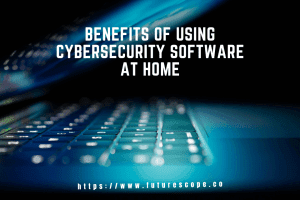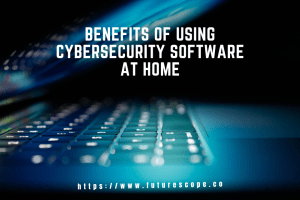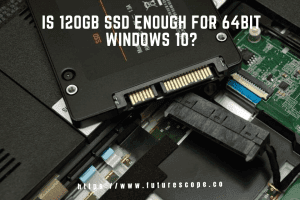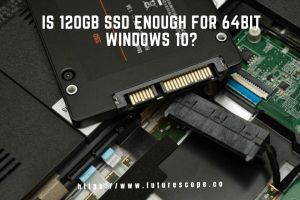What We Have Covered in This Article
Last Updated on March 16, 2021 by Editor Futurescope
I am sure that you have heard the term “IP address” a bunch of times, especially if you frequently hang out with at least one person who is a bit of a tech savvy. Yet, have you ever bothered to hear them out more carefully and ask them what this term basically represents and then have them explain everything thoroughly? I suppose you haven’t and I can’t blame you, since tech savvies are known for being pretty talkative when the ball is in their court and when they are familiar with the topic.
So, let me rephrase the question. Have you ever wondered what an IP address actually is, how it works and why do people often talk about changing it? I suppose you have and I suppose that you have also become curious about how changing this address is even possible and whether you should actually do it or not. Well, those are some of the questions that we are going to answer in the rest of the article, so I suggest you keep on reading to get properly informed. Here is a simple definition of an IP address.
What Is An IP Address?
I am going to assume that you aren’t here for the simplest definition of them all and that you are actually quite ready to dive into the details of this whole topic. In case you are wondering how I know that, let me just say that your search query says everything. Don’t worry, I’m not spying on you and I’m not watching your browsing history. Although, some people might be doing that, but let’s not get ahead of ourselves.
So, the question of how I know your intentions to learn more about IP addresses remains unanswered, right? Well, no. This is definitely a pretty unimportant question, but I’ll answer it, simply because I don’t want you to get any ideas in your head and think that I am spying on you. Basically, the fact that you have ended up here tells me that you have searched for content on IP addresses and the idea of changing them, and that’s the whole point. Anyway, let us get back to our topic now.
Before we get to the part of changing these addresses, we will need to take a look at what they actually are. So, let us start with the very basics. An Internet Protocol (IP) address is basically a combination of seemingly random and confusing numbers. Yet, those numbers are neither random nor confusing for people who know how to read them. To put it simply, your assigned numbers serve as a kind of an identity document for your device and they contain information regarding its most precise location.
You can think of it as your device’s very own home address that can let people find it and locate it anytime they want. These digits also allow devices to send data among one another, which means that your online activity can be traced with the help of this unique number that is assigned to your particular device. Sounds simple, doesn’t it?


Dynamic vs. Static
Well, if the above sounds too simple for you, it’s time for things to get a bit more complicated. When you think about your home address, for example, there is one thing that you can know for sure. It is constant and unchanging. Nobody is changing the names of the streets every couple of days, hours, or minutes. In fact, I can’t think of an example when I last heard about making changes to the names and numbers of particular streets.
Things are a bit different in the world of the Internet, though, because it seems that your devices can actually change their addresses quite often. Now, of course, this doesn’t always have to be the case and that unique set of numbers can most certainly always stay the same, but the point is that it doesn’t need to. That brings us to our next important topic of the day. It’s time for you to learn the difference between a static IP and a dynamic one.
As the name says it, a static IP address is the one that doesn’t change at all, which is why it is also called a fixed, or a dedicated one. This one isn’t assigned by the Dynamic Host Configuration Protocol (DHCP) server. Instead, it is manually set and it is basically set in stone. It is most usually used by public services that people need to be able to connect to on demand. You could basically compare it to looking at the contact information of certain businesses.
However, this option is quite less common than the second one that we are about to look into. I suppose you could have guessed that the second option I am talking about is called a dynamic IP address and they are mostly used for home connections, as well as public Wi-Fi hotspots. To put it simply, the dynamic ones are used for everything that doesn’t actually provide services to the rest of the world. If you need an example to understand this better, then let me put it this way. Google has a static IP and you, as a common Internet user browsing the Web from his or her home, have a dynamic one.
Now, you need to understand that the dynamic IP address doesn’t necessarily change every single time you connect to the Internet. Sure, it can sometimes change with every connection, but this can also be time-determined, meaning that some time needs to elapse before you get that new and unique set of numbers. This depends on the DHCP servers that I have mentioned above, since that’s the hardware that actually assigns your IP address.


Why Change It
Just like you have probably heard people talk about IP addresses at least a few times in your life, you have also heard them talking about changing that set of numbers and you are probably curious as to why that is necessary in the first place. Well, the truth is that it might not always be absolutely necessary, but that there are actually quite a lot of reasons why people tend to do it.
For starters, you might want to encrypt the data and thus increase your online protection and security, or you might need to bypass certain firewalls and access content that is actually restricted in your particular geographic area. Additionally, you might want to prevent throttling from your ISP or manage to leave no digital trace whatsoever when browsing something. Or, you might simply need to fix an IP address that wasn’t correctly configured. Those are only some of the reasons why people resort to changing this set of unique numbers.
If you still need some explanations regarding your IP address, here’s a nice and useful read: https://www.quickanddirtytips.com/tech/web/your-ip-address-explained
How To Change It
If you have your own reasons for changing your IP address, then you are probably now wondering how you can do that. There appear to be a few different things you can do in order to achieve this particular goal and now I am going to tell you what those things are. Let us start with the easiest method of them all, because you might want a quick and easy fix right now.
Basically, the easiest thing to do is just go somewhere else and thus connect to a different network. Of course, you can just as easily switch from a Wi-Fi connection to a mobile one right there at the comfort of your home and change this set of numbers without leaving the property. In addition to that, you can also try resetting your modem by unplugging it for at least 30 seconds and then plugging it back in.
If you aren’t quite sure that these methods will work or if they are simply not enough for what you are trying to do, you might want to think about using a virtual private network (VPN). This is the absolutely best method that can help you increase your online security and, unsurprisingly, bypass those geographical restrictions that might be blocking you from accessing certain content. Frankly, a VPN is usually the only secure option of changing your IP address that will actually work perfectly. All you have to do is find the perfect provider, get your VPN and connect to a different server.









